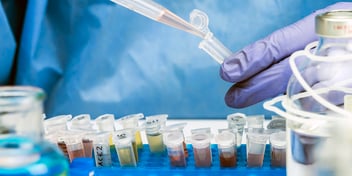CSIRO Saildrones to redefine ocean data collection
Two Saildrones – high-tech wind and solar-powered autonomous vehicles – has set off from Hobart on a mission to capture valuable ocean data.
Part of a Commonwealth- and industry-funded research project, these Saildrones will be at sea for up to 12 months to measure and monitor sea-surface temperature, salinity, ocean carbon and biota off the Gippsland coast in Victoria.
The data collected will be used as part of research applied to test and validate technologies used for future carbon capture and storage projects.
The Saildrones are remotely controlled and their systems can be accessed from anywhere in the world using an iPhone, offering flexibility in terms of the types of data collected and the speed of data capture. The array of sensors also allows Saildrones to be deployed for complex tasks.
CSIRO Chief Executive Dr Larry Marshall said while the fleet might seem understated, the value they deliver in terms of data and research is huge.
“Our partnership with Saildrone and the Australian Government builds on our investment in marine research infrastructure for the nation and supports CSIRO's strategy for cutting-edge research that facilitates the monitoring and mitigation of climate change," he said.
"Industry partnerships are critical to innovation and are at the heart of our mission as Australia's national science agency.
"The fleet of Saildrones might be small in stature, but their ability to autonomously monitor and collect rich streams of data at sea for up to 12 months makes them unique in terms of the value they can deliver industry, the research community and ultimately our biggest customer: the nation.”
While the two Saildrones will collect data in the Gippsland Basin, the vehicles are also expected to be deployed to future studies in hard to reach places.
"We have never had an opportunity like this before," CSIRO scientist Dr Bronte Tilbrook said.
"By combining advanced sea faring sensing technology, we will be able to capture more data over longer periods of time and provide credible information back to government, industry and the community.”

